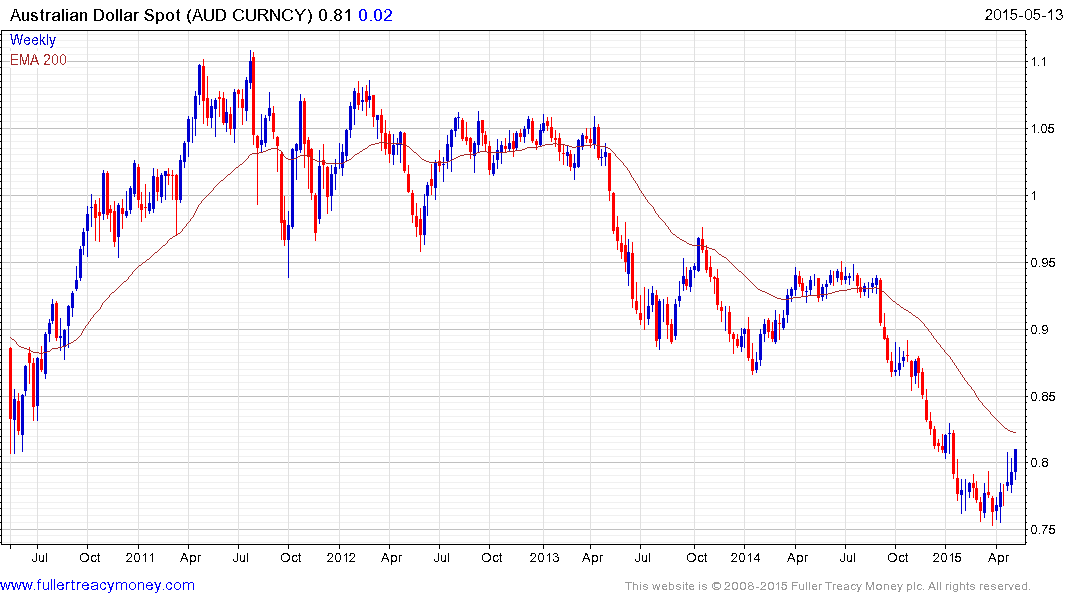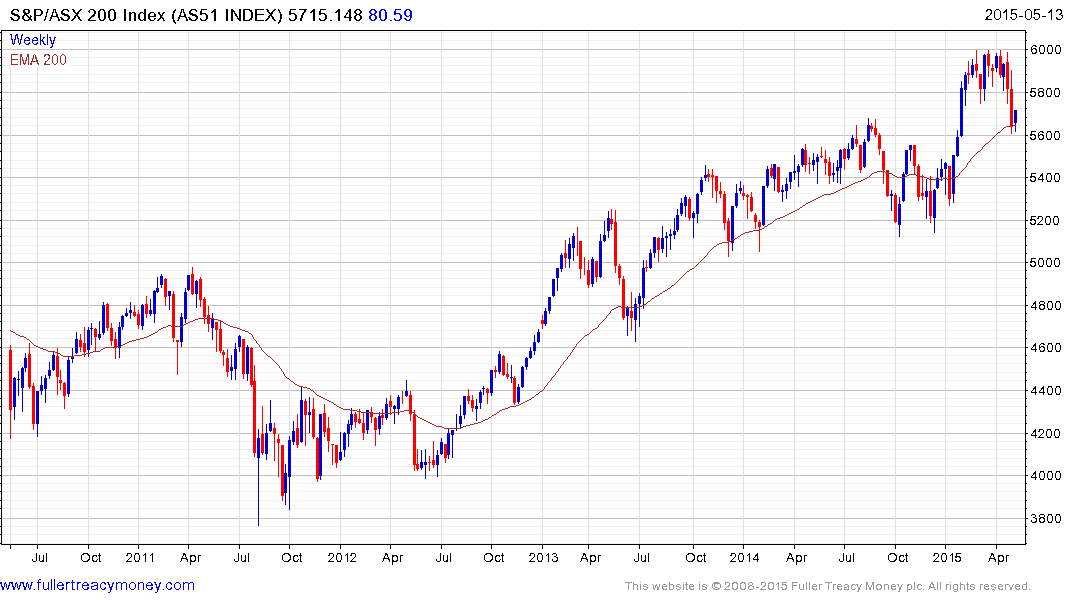Sure-Fire Loser Aussie Turns Winner as RBA Seen Ending Rate Cuts
This article by Netty Ismail for Bloomberg may be of interest to subscribers. Here is a section
After the Reserve Bank of Australia chose not to comment last week on whether it would keep cutting interest rates, hedge funds erased bets on an Aussie decline and strategists boosted forecasts for the first time in months. The currency responded by climbing above 80 U.S. cents, moving further away from the 75-cent level RBA Governor Glenn Stevens favors to keep the economy competitive.
Stevens’s reluctance to pursue ever-looser monetary policy for fear of inflating a real-estate bubble leaves the Aussie at the mercy of investors lured by the highest government-bond yields of any top-rated nation. That means his only hope of a weaker currency may be a surge in the U.S. dollar fueled by the Federal Reserve’s plan to raise interest rates this year.
“Australian interest rates, whichever way you cut it, are still well above comparable global rates and that attracts money to the Australian dollar,” said Shane Oliver, head of investment strategy ion Sydney at AMP Capital Investors Ltd., which manages $124 billion. “That problem won’t be eliminated
until the interest-rate differential is closed.”
The RBA played a pivotal role in weakening the Australian Dollar as it balanced supporting the export sector with the risk of further inflating the property market. As the resources sector stabilises, the need to continue to set all-time new lows for rates is less compelling and there is no denying that property prices around the major conurbations are not cheap.

The Australian Dollar trended consistently lower between September and January but lost momentum and rallied in late April to break the progression of lower rally highs. It is now breaking up out of this short-term range and a clear downward dynamic would be required to check current scope for an additional upwind of the overextension relative to the 200-day MA.

The S&P/ASX Index bounced today in the region of the 200-day MA and a sustained move below 5600 would be required to question the medium-term consistency of the overall trend.


